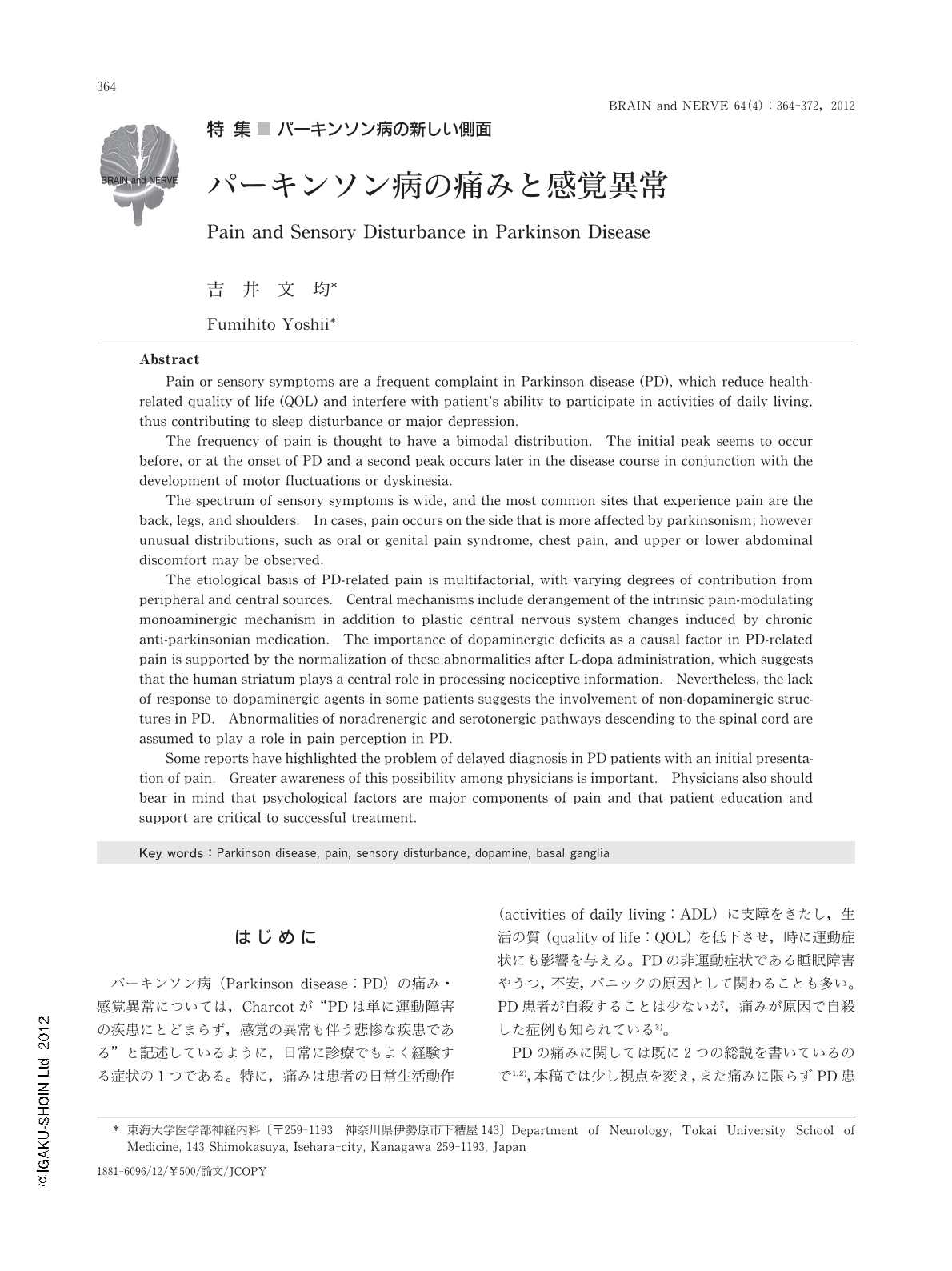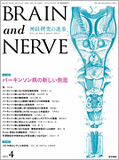Japanese
English
- 有料閲覧
- Abstract 文献概要
- 1ページ目 Look Inside
- 参考文献 Reference
はじめに
パーキンソン病(Parkinson disease:PD)の痛み・感覚異常については,Charcotが“PDは単に運動障害の疾患にとどまらず,感覚の異常も伴う悲惨な疾患である”と記述しているように,日常に診療でもよく経験する症状の1つである。特に,痛みは患者の日常生活動作(activities of daily living:ADL)に支障をきたし,生活の質(quality of life:QOL)を低下させ,時に運動症状にも影響を与える。PDの非運動症状である睡眠障害やうつ,不安,パニックの原因として関わることも多い。PD患者が自殺することは少ないが,痛みが原因で自殺した症例も知られている3)。
PDの痛みに関しては既に2つの総説を書いているので1,2),本稿では少し視点を変え,また痛みに限らずPD患者の訴える感覚異常も含めて述べる。
Abstract
Pain or sensory symptoms are a frequent complaint in Parkinson disease (PD), which reduce health-related quality of life (QOL) and interfere with patient's ability to participate in activities of daily living, thus contributing to sleep disturbance or major depression.
The frequency of pain is thought to have a bimodal distribution. The initial peak seems to occur before, or at the onset of PD and a second peak occurs later in the disease course in conjunction with the development of motor fluctuations or dyskinesia.
The spectrum of sensory symptoms is wide, and the most common sites that experience pain are the back, legs, and shoulders. In cases, pain occurs on the side that is more affected by parkinsonism; however unusual distributions, such as oral or genital pain syndrome, chest pain, and upper or lower abdominal discomfort may be observed.
The etiological basis of PD-related pain is multifactorial, with varying degrees of contribution from peripheral and central sources. Central mechanisms include derangement of the intrinsic pain-modulating monoaminergic mechanism in addition to plastic central nervous system changes induced by chronic anti-parkinsonian medication. The importance of dopaminergic deficits as a causal factor in PD-related pain is supported by the normalization of these abnormalities after L-dopa administration, which suggests that the human striatum plays a central role in processing nociceptive information. Nevertheless, the lack of response to dopaminergic agents in some patients suggests the involvement of non-dopaminergic structures in PD. Abnormalities of noradrenergic and serotonergic pathways descending to the spinal cord are assumed to play a role in pain perception in PD.
Some reports have highlighted the problem of delayed diagnosis in PD patients with an initial presentation of pain. Greater awareness of this possibility among physicians is important. Physicians also should bear in mind that psychological factors are major components of pain and that patient education and support are critical to successful treatment.

Copyright © 2012, Igaku-Shoin Ltd. All rights reserved.


